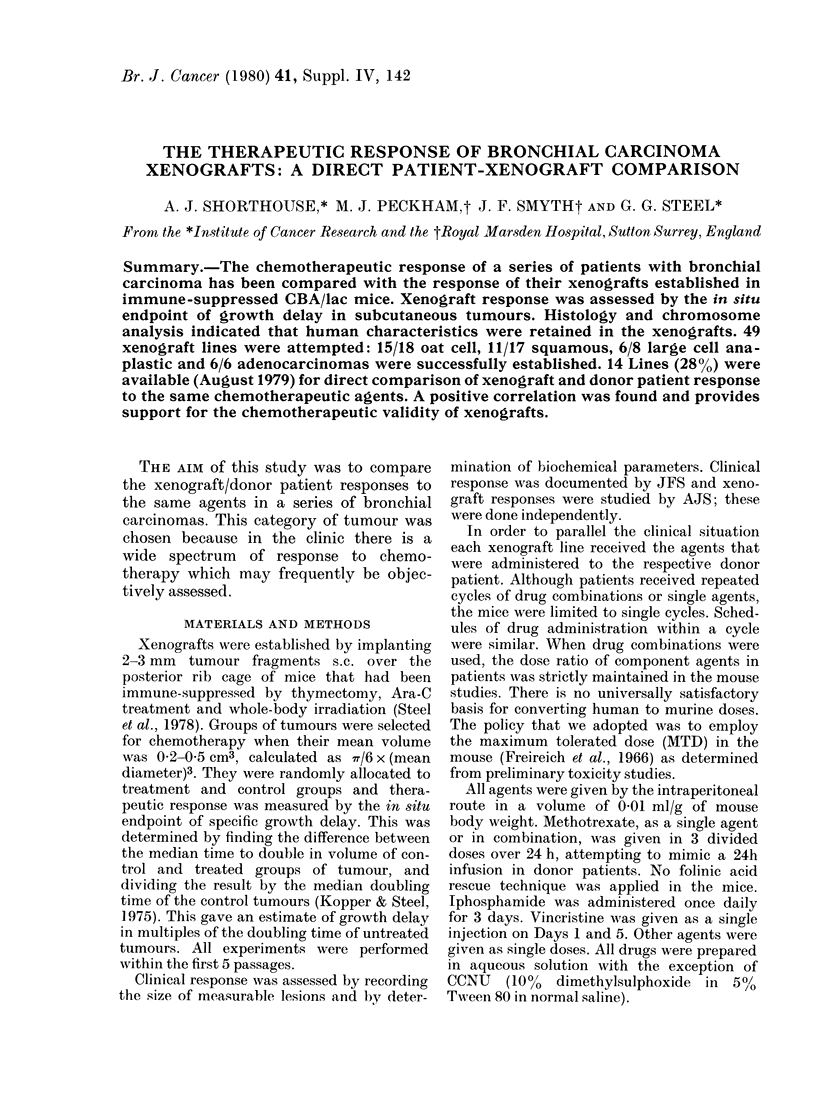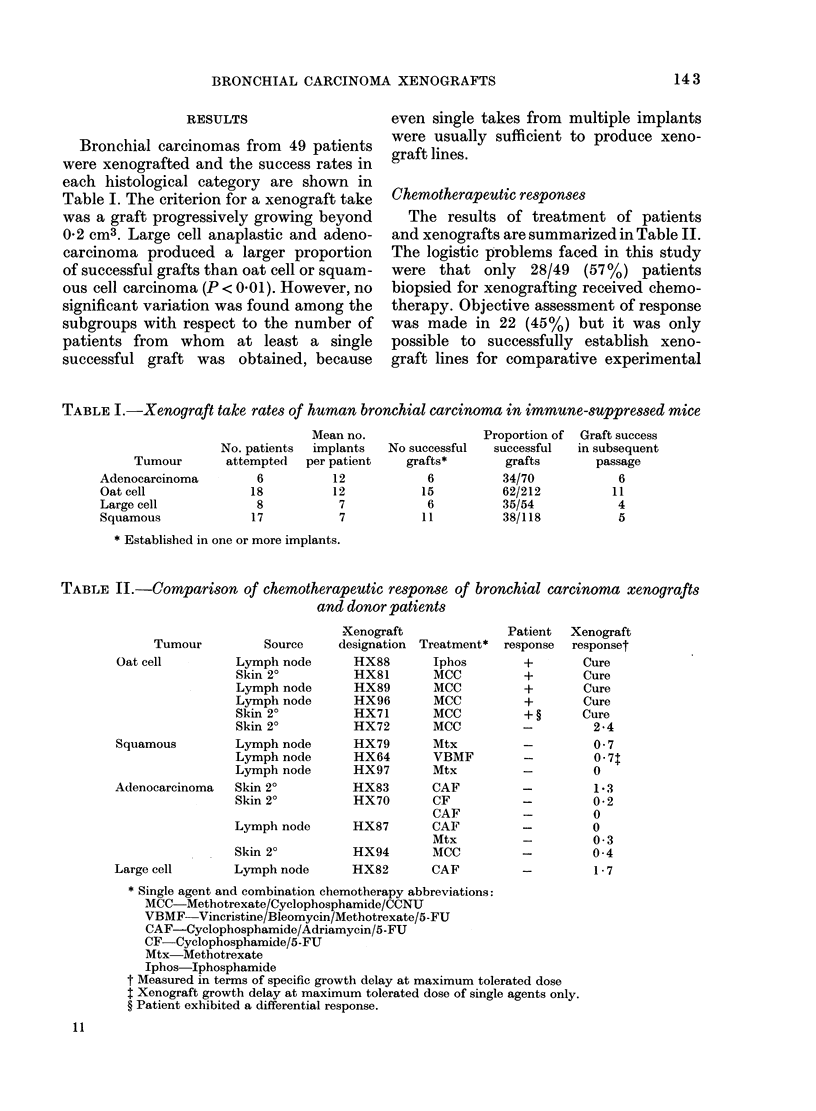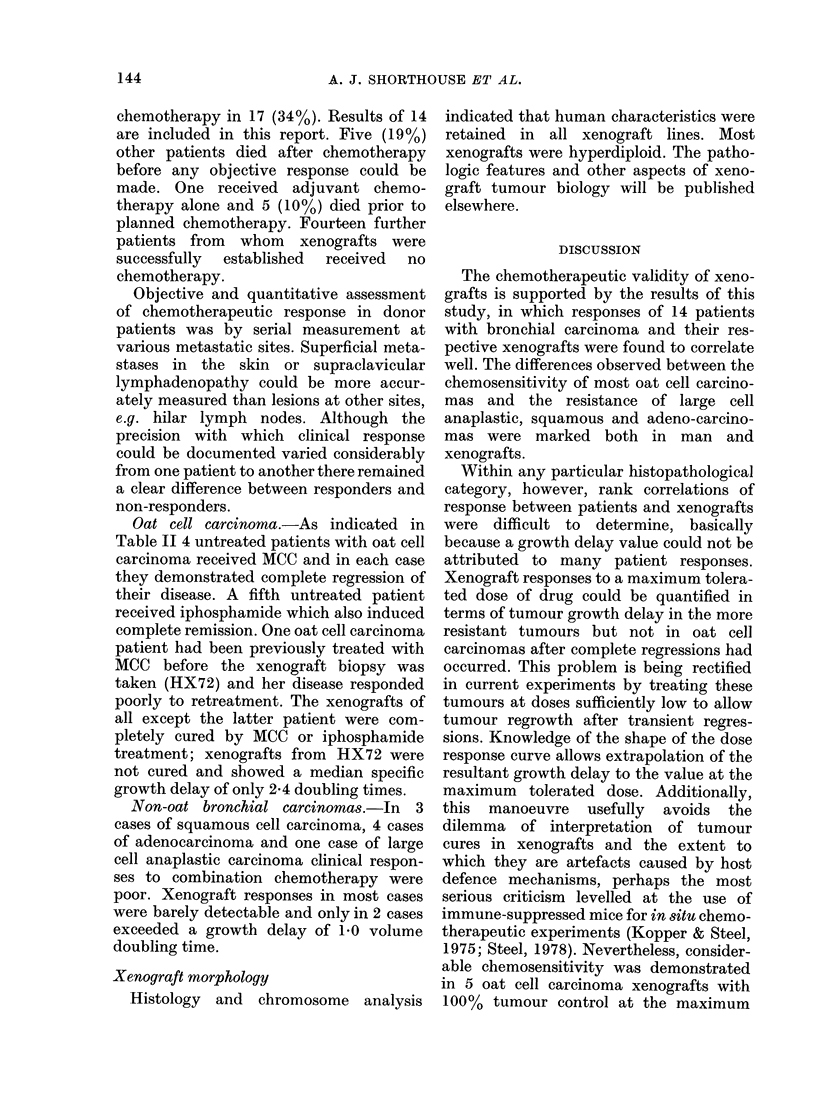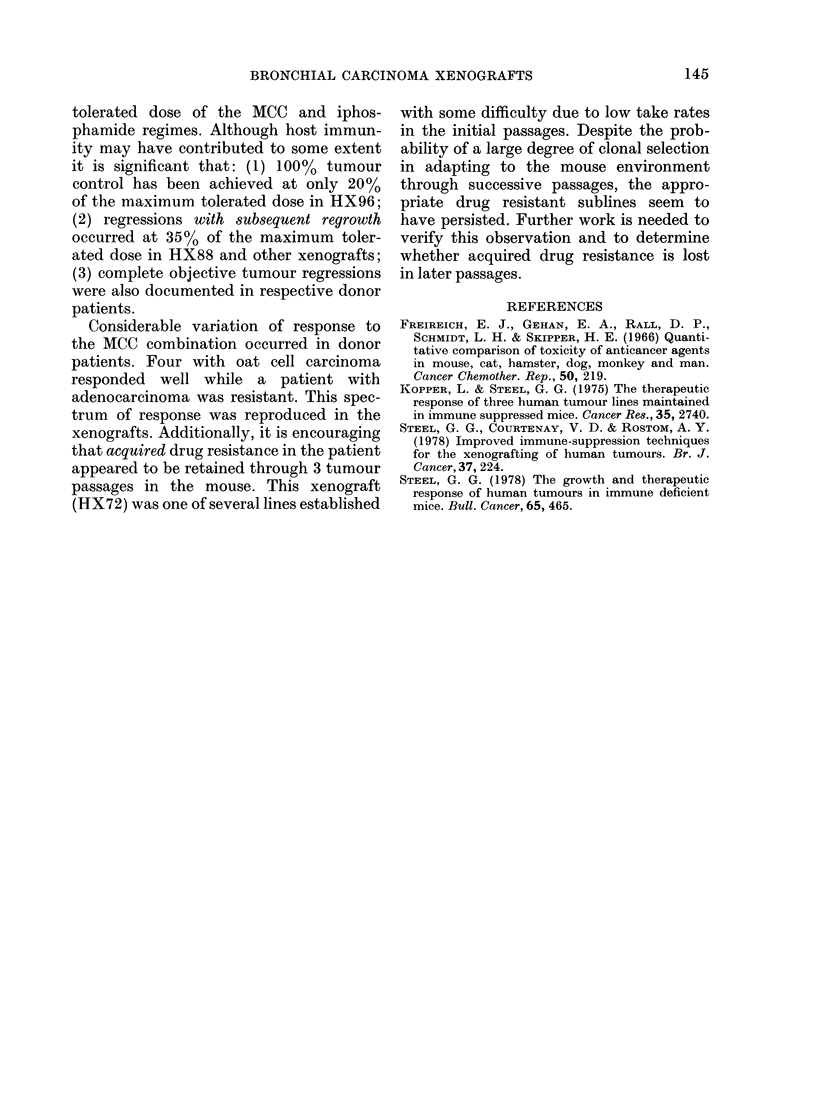Abstract
The chemotherapeutic response of a series of patients with bronchial carcinoma has been compared with the response of their xenografts established in immune-suppressed CBA/lac mice. Xenograft response was assessed by the in situ endpoint of growth delay in subcutaneous tumours. Histology and chromosome analysis indicated that human characteristics were retained in the xenografts. 49 xenograft lines were attempted: 15/18 oat cell, 11/17 squamous, 6/8 large cell anaplastic and 6/6 adenocarcinomas were successfully established. 14 Lines (28%) were available (August 1979) for direct comparison of xenograft and donor patient response to the same chemotherapeutic agents. A positive correlation was found and provides support for the chemotherapeutic validity of xenografts.
Full text
PDF



Selected References
These references are in PubMed. This may not be the complete list of references from this article.
- Freireich E. J., Gehan E. A., Rall D. P., Schmidt L. H., Skipper H. E. Quantitative comparison of toxicity of anticancer agents in mouse, rat, hamster, dog, monkey, and man. Cancer Chemother Rep. 1966 May;50(4):219–244. [PubMed] [Google Scholar]
- Steel G. G., Courtenay V. D., Rostom A. Y. Improved immune-suppression techniques for the exongrafting of human tumours. Br J Cancer. 1978 Feb;37(2):224–230. doi: 10.1038/bjc.1978.30. [DOI] [PMC free article] [PubMed] [Google Scholar]
- Steel G. G. The growth and therapeutic response of human tumours in immune deficient mice. Bull Cancer. 1978;65(4):465–472. [PubMed] [Google Scholar]


